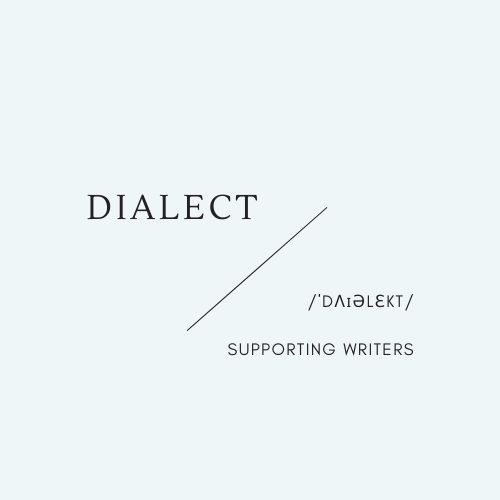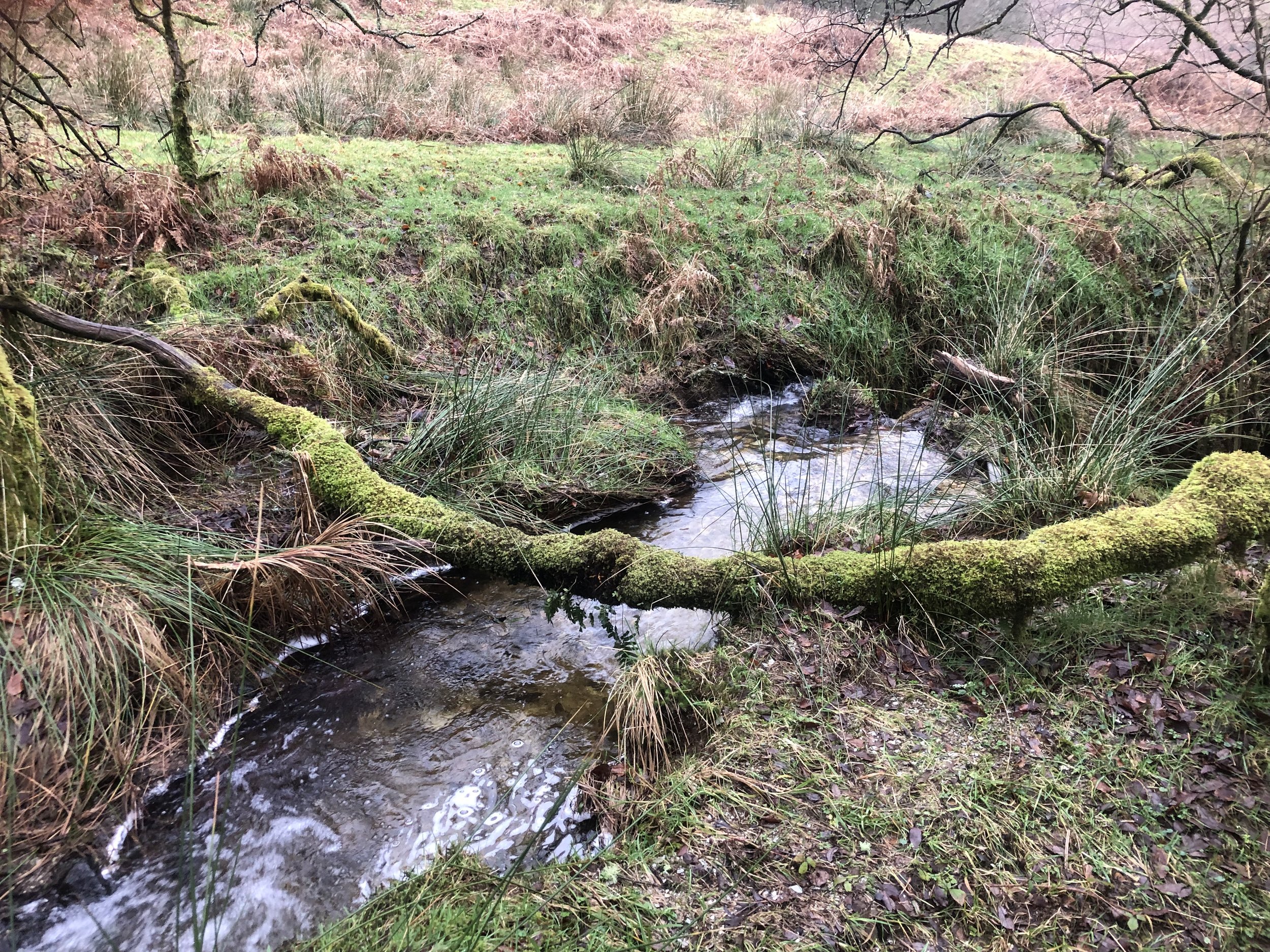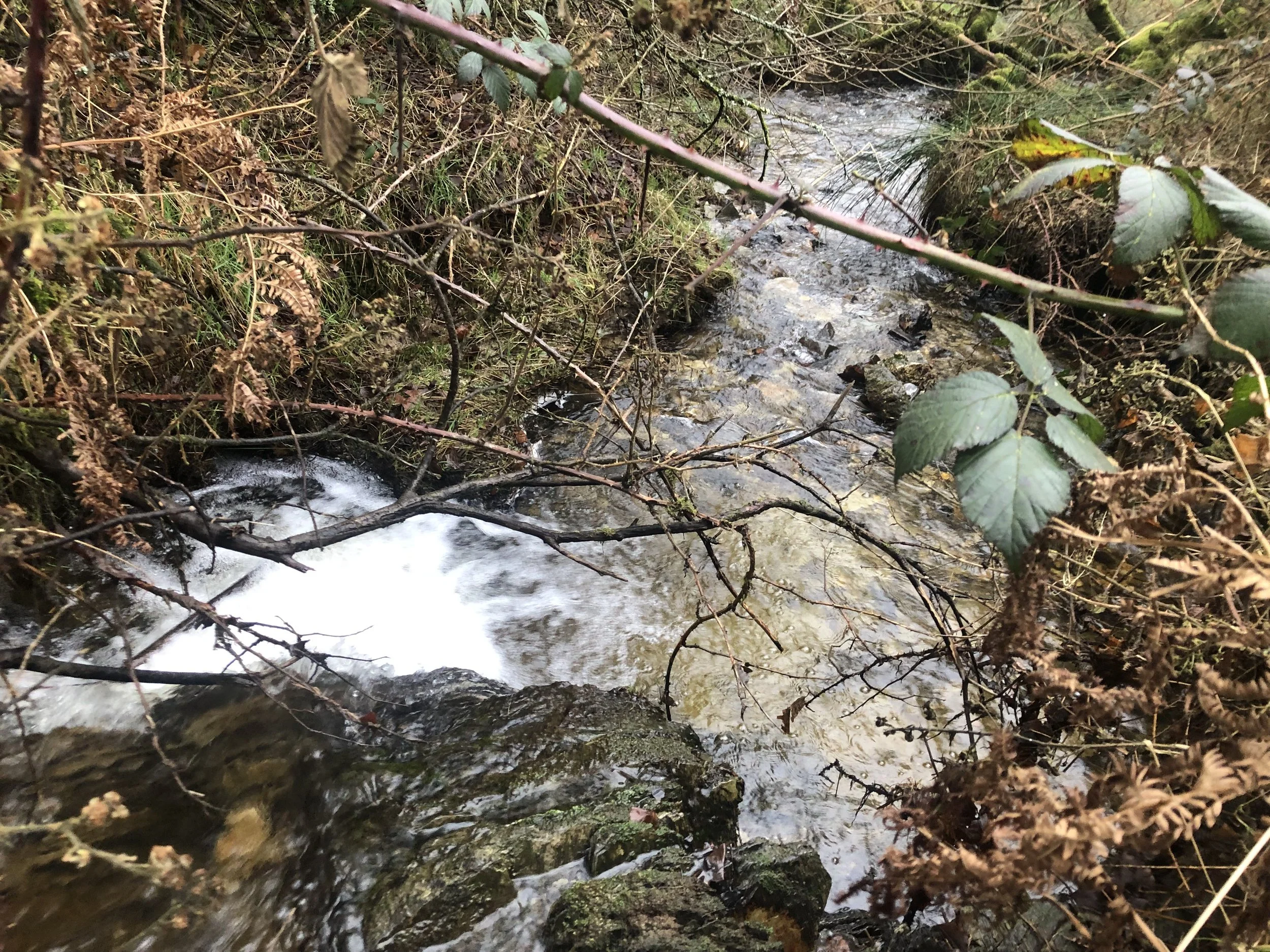Going Uphill to Fetch Water
Jojo Tulloh writes about her journey to find the spring that sustained Hope Bourne, an artist and writer who lived alone in a caravan on Exmoor
For the last few years I have been researching the lives of three women, Margaret Tait, Hope Bourne and Patience Gray. They were a film maker and poet, an artist and writer and a writer and jeweller respectively. All were women whose connection to a particular place sustained them creatively until the end of their lives; living and working in landscapes from Scotland to Southern Italy they responded to the problem of living by writing books, making films and paintings that shared an obsession with the transcendent in the everyday.
My current book is partly concerned with journeys taken on foot, across the landscapes these three women lived in. I have made extensive walks across Exmoor and twice gone to Apulia where Patience Gray lived. In April I will travel to Orkney to visit Margaret Tait’s extensive archive of unpublished writing.
My most recent pilgrimage was taken one morning this February, on foot along the river Barle towards Cow Castle. It was provoked by a few pencil written words on one of Hope Bourne’s journal pages. The page itself was partly chewed away in the top right-hand corner by a mouse.
In the evening went again to my water hole – how curious it is to go up hill to a high field to get spring water - and looked at the last lingering golden light of a perfect day gilding the hill tops, and the blinding gold ball of the sun going down beyond the black trees of Horsen, then home to turn-in. Turned in fairly early because of midges! Reclined on my bunk watching the last glowing light on the Big Hill turning the big stands of fern into shadowy jungles, then settled down to sleep. Amen amen for a perfect day.
The spring was in a place Hope called Girt Errish (Big Field), at the back of her home, right on top of a hill that stretches out to provide a look out, west down the valley of the Barle. This high hill is called Great Ferny Ball, a large green outcrop, it‘s top appears as a horizontal green line against the sky, its flanks like slabs, it conceals the smaller hill behind it. So that when I walk from Simonsbath, Hope’s sanctuary is completely hidden, Ferny Ball itself is surrounded by streams, once there you have the feeling you are on an island. Hope described it as “a ball patchworked with fields”, a bare knoll over which has been stitched the evidence of man’s intervention, gates and stone gate posts, long banked divisions planted with trees grown tall. Beyond and above the bracken and gorse of the unenclosed moor stretches to the horizon in every compass point.
Every time I walk in this valley, like Hope, I feel the need to describe it again. She did it by constantly painting it in quick watercolour sketches. I do it with words. It’s partly because the weather often makes it feel very different but there is something else. The geographical features of this valley add to the mystery which always seems to surround any attempt I make to walk to Ferny Ball, this makes me want to pin the experience down on paper so that I will always be able to find my way back.
Today, up above me high on the gorse covered hill, a hawk hangs improbably still in the gusting air, then takes the wind and sails away down the valley to try a new hovering spot. It’s the day after Candlemas. On this dull day, the lights of the valley stand out, bracken a deep rust-brown, stems broken, leaves hanging straight down like soaking wet hair, pale bleached gold of tussocky grass, a few gorse flowers showing as dabs of pure yoke yellow pigment. The fence beside the river has been dug out in one spot, the earth is scrabbled out and there are paw prints with talons pointing down, an otter’s seal (print).
In Hope Bourne’s book, Moorland Year, a composite journal taken from her 40 years of natural observation, she describes seeing something silver lying on the narrow bridge over Sherdon Water, the stream directly below her home. She approaches and finds it is a salmon, minus its head, so freshly killed that the blood is still oozing from its neck. An otter has placed it there and hearing human footsteps disappeared. She takes it home and eats it for her supper.
Although Hope says she never saw them I have seen an otter near Ferny Ball and today, this clear print seems a signal to keep walking on this wet-grey-rain-stinging-in-my face day.
I cross the river at the ford for horses near Horsen, here a wooden bridge has been placed for walkers. The water has been high here, there is a strand line of broken twigs, grasses, rushes woven together with the odd shock of the man-made, a bright green plastic dog-chew, a tennis ball, a red plastic dinosaur, I take the dog toy and the dinosaur leaving the dirty green tennis ball to blend in and be found by someone else’s dog.
This time less nervous than before I stay near to the river, in the area I know to be marked as access land. I walk up from the sodden meadow towards the line of trees that edge the steep field, a hedge grown up into a tall band of beech trees, trunks shining bare and black in the wet of this winter’s day. I am not quite sure where I am, the height of the hill obscures the path and conceals any reference points that might help me orientate. Even the name written on the Ordnance Survey map conceals even while describing. It’s written in local dialect, Ferny (bracken) and Ball (a rounded hill). I hesitate, getting my map out, uncertain even though I know this place well. This is the old trick of Hope’s place that kept it hidden from me for so long whilst I actively tried to walk there. Is this disorientating process also part of its magic?
This barren hill seems to give me the shoulder. Above me the fields worked by the farmers (and where Hope ‘looked to’ the sheep and the cattle are still completely hidden from my view. I’m still not that confident as I cross over into the field but then I see beyond the trees, a straggly line of bramble, hazel and withy, so I head for this. The spring she collected water from rises near the crest of this hill and then runs down to join the Barle. It’s a secretive stream, if you know it’s there you can read the scribbled line of scrubby trees that marks its progress across the field but the water itself is invisible until you are almost on top of it.
The ground, although elevated, is saturated. Thick clumps of rushes and boggy pools impede my progress. I walk carefully to avoid the flooded puddles of liquid mud, then decide it would be easier to walk in the stream rather than struggle through the overgrown scrub at its edge. As I descend down into it, brambles catch my hair, I have to fight through horizontal branches of moss-covered withy to get to the water. My foot sinks into the mud up to the very top of my rubber boot.
The stream is full and charges beneath earth banks cut deep. Intermittently it falls in short drops from small rocks to form mini waterfalls, with pools of white water churning beneath. From one of , I fill two bottles of water, then stop and slightly awkwardly, crouched beneath the dripping branches, open up my pack and eat a banana and a chocolate bar (a luxury Hope loved but only rarely allowed herself). The water has a crystal taste, not peaty at all, it is perhaps the clearest, cleanest flavoured water I have ever drunk. I put the bottles in my bag and continue up the stream, looking at the banks trying to think where would have been most likely as a place to dip your bucket.
This stream was for Hope, both pleasure and a necessity of life, a chore to be fulfilled, but in her description of it, perhaps not an onerous one. It added a rhythm to her day. A stream like this is company, it’s constant running on has an uplifting quality, the sound of its movement is a conversation. It’s purity a blessing and an aid to living well. She delighted in the sweetness. This element, water, was something Hope returned to often in her writing and her sketches. She describes its lights, she tries to capture its movement in drawings and paintings. This gathering and appreciation of water was also a link to all those who had lived high up here on the moor from the bronze age and had left stone settings that mark the sources of water all across the northern side of Exmoor.
Further down a twisting tree trunk covered in moss lies across a channel of water with a flat grassy space on either side, going closer, I see a length of treated roofing timber has been sunk into the edge of the bank forming a sort of dam so that for a couple of metres the water deepens into a bath-like channel directly beneath the fallen trunk. Was this a place to bathe as well as collect water? The edges of the water here sparkle with silvery mica in a ribbon of fine shingle and sandy grit. As I get closer to the water, I see something that makes the hairs on my neck stand up. The indented shape of two feet, filled with dark brown water in the mud at the edge of the stream.
It is a grey week day in early February. Today and in the last week it has rained and rained, there are no live stock up here to check on, I have seen no one, apart from one woman with two horses, miles away, close to the village. For hours there has been not a walker, a farmer or a huntsman visible in any direction. The landscape is drenched, sodden.
So how do they come to be here these two distinctly female sized, pointed toed and heeled boot prints - in this place which now I realise is so obviously a water hole? All the time I have been scrabbling along this overgrown ditch, the feeling of another’s presence has been strong, the sense that there is someone just out of sight, close by but unseen, in the next thicket of trees along the stream. I am not scared but am possessed by an eerie feeling.
I turn and despite what I had planned for today I find my feet directed towards the site of Hope’s caravan. I don’t go the quickest way. Instead I walk downhill with the stream, over a field boundary back onto the moor and away from the tended fields, wary of meeting an irate landowner, today my courage around trespassing ebbs and wains. For once am approaching Ferny ball from the west, in a way I have not done before. Across the hill is the wide unmetalled roadway leading up to Landacre Bridge. Below I can see the farm track sunk between two hedges. At the corner of the field a cattle crush has been put between an empty gateway and fenced in with metal hurdles.
The field I am in is directly above the shippons (hay byres) in the track leading down to Hope’s ruined farmstead. I go into Hope’s garden from behind her shed. All along the corners of this flat piece of ground are clumps of snow drops beginning to flower, spreading year on year since Hope left, birds or squirrels have pulled up a few bulbs so I put these in my pocket to plant at home.
Inside the shed are stacked the same jumble of rubble sacks filled with magazines, old Country Life’s and National Geographic’s, there is a desk in the corner. Since I last came here rats have been in and there is a confetti of chewed paper over everything. Beside the door hanging off its hinges, is a mirror in a frame greening up, a glass for a paraffin lamp, an enormous white canvas sack tent in a sack still un-rotted after decades, it’s amazing how many of Hope’s belongings are is still in this shed thirty years after she left. Outside, on the flat piece of ground where she had her caravan, I crouch and try to catch the view she would have had from her doorway. I don’t feel her presence here, the garden she made has long sunk back into the hill. It’s a lonely place again. When I look into the shippons, their corrugated iron roofs are showing big gaps of light. Back in the field I sit on the wet grass and look up the silvery line of the river that leads to Withypool, a slow bend between two brown hills. I keep still and listen. Imagine being here in all seasons.
By chance I am here at a moment when the seasons turn, but is it chance? I have begun to feel that nothing ever happens by accident where Hope is concerned. Later that night looking back through photographs I have taken at the archive I come across a page described as ‘Candlemas drawing”.
It’s a single page of A4 drawing paper ripped out from a ring bound pad. It describes in pale blue, grey and pink coloured pencils the morning of February 2nd, 1971. It is titled in pencil, ‘Memories of Candlemas Morning Exmoor 1971’.
Hope moved to Ferny Ball on midsummer day of 1970, this then, is a drawing of the first spring she saw as a resident of her new wild home. Although spring comes late to Exmoor, Candlemas is the point (midway between the shortest day and the spring equinox) when the light begins to strengthen and return. It is no surprise that Hope felt this particular dawn had special importance and should be recorded. In fact she took particular care to observe the rising of the sun on significant dates throughout the year. To me it is more evidence that she was in tune with the changing of the seasons and the ebbing and waxing of sun and moon, in a way that only those who live a life outside, in a place devoid of artificial light, can be. She bore witness to and celebrated light in all her drawings, making note of the clouds, the sky, the moon and the stars.
She had lived in a caravan on Exmoor before but never in such an isolated position. Was getting through this first winter, a test for her? Does this dawn record exist as acknowledgment of that?
Under the title she has written
Seen on the way from Ferny Ball to Landacre, between 9 and 9.30 am, deep snow and an iron hard frost.
The first drawing is of a grey curve of hill above which are flecks of pinkish light showing through above Sherdon Hill underneath Hope has written:
Flecks of dawn cloud over Sherdon Hill (looking south)
On the right-hand side of the page is a hill topped by black shapes of tree and a pink band of light.
First rays of the sun striking on the shoulder of Sherdon Hill (looking S). Sky pale turquoise, surface broken here and there by rush and fern.
Beyond this is the blue mound of Bradymoor, shaded pink.
Bradymoor from the Ferny Ball track, rose colour in the light of the rising sun. Foreground in cold bluish shadow.
At the bottom of the page is a drawing of Brightworthy Hill with the sun’s rays blazing out in spokes behind the hill. A simple scribble of yellow pencil crayon, the universal symbol for sun.
One more drawing at the bottom describes the light touching a far hill.
Rays of the rising sun touching the far shoulder of Dillacombe (looking south east);
The things Hope chooses to record are eternal. The sun has ever risen above this hill and others before her have celebrated the weakening of winter’s iron grip. On the high ridgeways the ancients have placed their barrows, solitary stones, hill forts and modest stone circles. She is a conscious part of this chain. I think this is what gives her story a force beyond the mere facts of her life.
When she comes to live at Ferny Ball she is 52, unmarried, unwaged, childless, she’s recently had her heart broken. The existence she has chosen is tough and solitary but she is free of any obligation, this is the freedom of her life and she uses it well.
Jojo Tulloh
Jojo Tulloh is an editor, author and pamphleteer. She has lived in London, Los Angeles and North Devon. She has worked in film production, and as a script developer on everything from rap videos to a biopic of Francis Bacon. She has always written stories, receiving her first award when she was 16. She is a published food writer (winning the Fortnum and Mason Food Book of the Year award in 2014 and again in 2017 was named Fortnum & Mason Cookery Writer of the Year in 2017). She has also self-published pamphlets on the marginalia of Elizabeth David and the food of Marguerite Duras among others. She has written for the Financial Times, the Telegraph and the Observer.
Find Jojo online at: Jojo Tulloh




